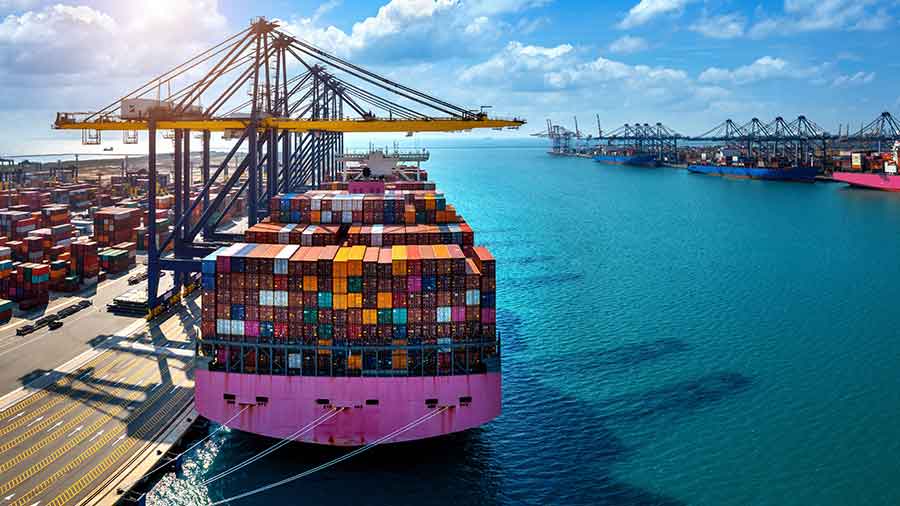Vietnam Outlines Progress on COP26 Commitments
Vietnam Briefing follows the progress of Vietnam’s commitment of net-zero at COP26, including eight areas that the government is required to focus on. The government is likely to release further decrees on implementation including investment incentives for foreign businesses.
Following Vietnam’s commitment to net-zero at the Conference of the Parties (COP26), the government released Notice No 30/TB-VPCP on guidance on implementation.
Vietnam’s Prime Minister Pham Minh Chinh held a meeting with the National Streeting Committee and urged ministries to develop programs and plans to implement Vietnam’s commitments at COP 26.
Particularly, the Notice highlights eight areas that government agencies will be required to focus on:
- Transitioning from fossil fuel to green/clean renewable energy sources;
- Reduction of greenhouse gas emissions;
- Reduction of methane, particularly in agriculture and waste management;
- Use of electric vehicles (EVs);
- Sustainable management including using forests and increasing trees to offset carbon emissions;
- R&D for construction material usage and urban development for sustainable development;
- PR campaigns for public and businesses to increased awareness and support for the government’s COP26 commitments; and
- Step up adoption of digital economy to address climate change.
With this, the Ministry of Industry and Trade (MoIT), the Ministry of National Resources and Environment (MONRE), and relevant government agencies are expected to release further guidance on implementation.
While the revised Law on Environment will go to some degree to mitigate greenhouse gas emissions and is consistent with COP26, implementation will be key. Low or minimal emissions will play a major role if Vietnam wants to change from fossil fuels to low emissions.
To this effect, the government is likely to issue a new Decree on mitigating greenhouse gases while protecting the ozone layer, as well as setting up committees to promote laws and policies, admin reforms, and so on for climate-proof infrastructure and renewable energy.
The government also plans to complete and upgrade the National Strategy on Climate Change including net-zero emissions and reducing emissions of methane gas.
Vietnam has asked for international assistance in meeting its climate change commitment. To this effect, the US is funding US$36 million in Vietnam’s Low Emission Energy Program. Under this project, USAID will help Vietnam transform towards clean energy using advanced technologies while improving energy performance and increasing competition in the energy sector.
To achieve net-zero Vietnam will need to reduce carbon emissions, reduce pollution, and implement higher energy optimization in practical terms. For example, a factory in Ho Chi Minh City’s District 9, has already started implementing these measures even before Vietnam signed a commitment. It installed a solar power system on the roof, rearranged factory corridors to allow for light, as well as used lights with higher luminescence efficiency.
Power Development Plan 8
Vietnam’s Power Development Plan 8 (PDP8) for 2021 with a vision to 2045 was supposed to be released in 2020. Initial drafts included a plan to incorporate renewable energy, however, another draft raised the country’s coal capacity to 40GW by 2030.
After PM Chinh’s commitment at COP26, sources indicate that the current PDP8 draft is further being revised to reflect Vietnam’s commitment. In addition, to deal with overcapacity, Deputy Prime Minister Le Van Thanh has asked relevant government agencies to reduce solar energy capacity and increase off-shore wind capacity to increase efficiency.
An approval of the draft is likely sometime in the first quarter of 2022.
Key drivers
Vietnam’s commitment to climate change has been spurred by the government’s commitment to energy availability as well public demand for clean air. Vietnam has been facing air pollution issues with Hanoi and Ho Chi Minh City prone to pollution due to rapid growth. The solar and wind industry have prompted policymakers to make aggressive policies on climate change.
While Vietnam is one of the leading countries in solar at wind capacity among ASEAN countries, overcapacity and lack of infrastructure and regulations have hindered some of this growth.
Challenges
There will be challenges, as Vietnam is a rapidly growing economy. Electricity demand is projected to increase by 9 percent annually to 2025. Vietnam currently has diverse energy sources such as coal, oil, natural gas, hydropower, and renewable energy. Experts have pointed out that renewable energy will play an important role to meet these commitments, while funding required for the renewable energy sector is estimated at around US$23.7 billion by 2030. This represents opportunities for foreign investors, however, the government will have to ease obstacles related to capital, complex regulations, supporting industries, grid capacity, and qualified human resources among others.
Nevertheless, Vietnam’s commitment at COP26 sets the right tone and shows that the government is serious about climate change and energy resources. Foreign investment is likely to be welcomed, though reforms on regulations and incentives will be necessary. The finalized PDP8 will be a starting point for this.
About Us
Vietnam Briefing is produced by Dezan Shira & Associates. The firm assists foreign investors throughout Asia from offices across the world, including in Hanoi, Ho Chi Minh City, and Da Nang. Readers may write to vietnam@dezshira.com for more support on doing business in Vietnam.
We also maintain offices or have alliance partners assisting foreign investors in Indonesia, India, Singapore, The Philippines, Malaysia, Thailand, Italy, Germany, and the United States, in addition to practices in Bangladesh and Russia.
- Previous Article Assessing Vietnam’s Labor Market and Payroll Considerations
- Next Article Вьетнам утверждает Правила электронной коммерции: Указ 85































